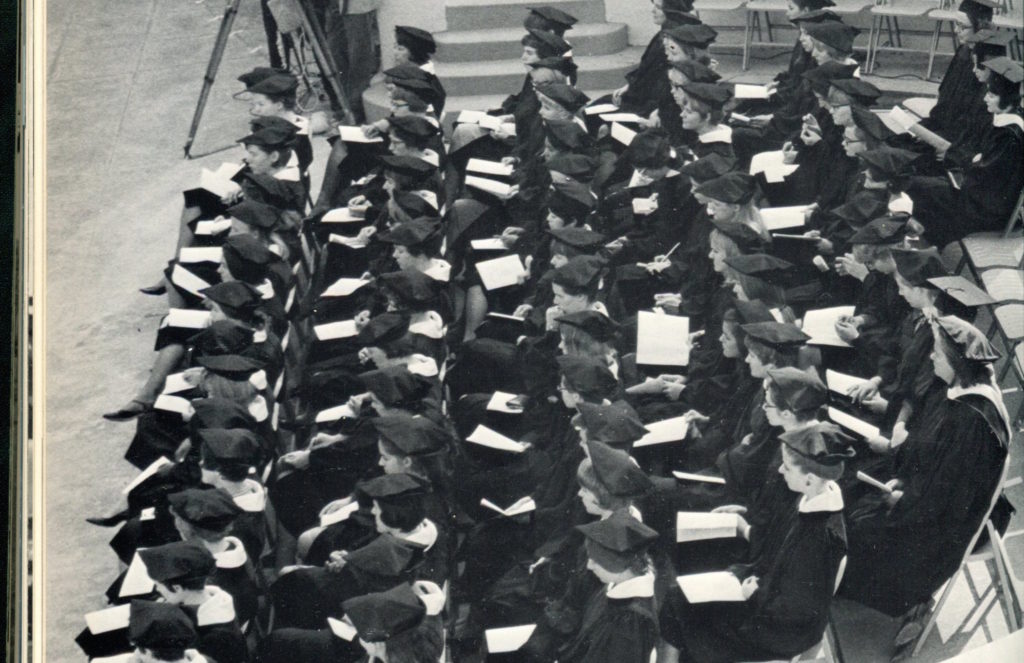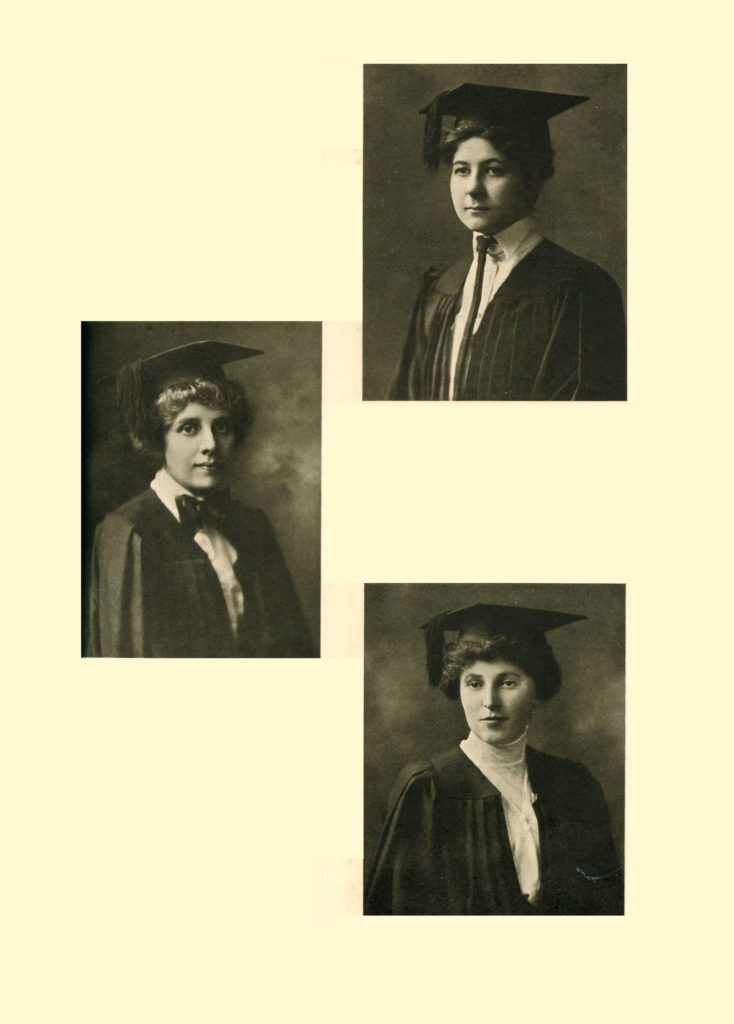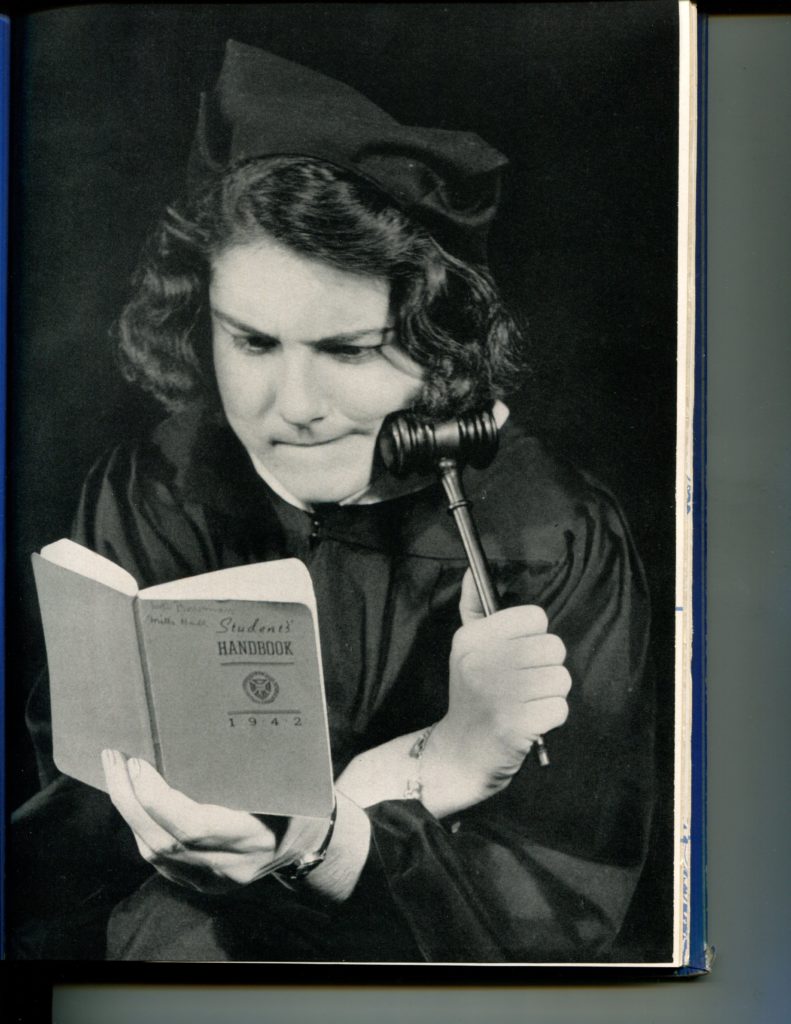Tucked away on two shelves of the library on-campus contain a wealth of Mills history, dating back all the way to 1915 — the yearbooks, now under the title the Crest. Just by paging through the books, it becomes clear that the Mills academic regalia has not always had the look we are familiar with now.
According to an article from Graduation Source titled “Graduation Cap and Gown History,” academic regalia began being used with the first universities in the 12th and 13th centuries. It was influenced by clerical wear, as many professors and students were involved in the church at the time.

Historians believe scholars wore the long robes to keep warm in unheated medieval buildings. Current-day regalia is largely based off that of Oxford and Cambridge, who were the first recognized schools to officiate graduation outfits. In the United States, gowns were typically grey until the 1950s, when students began to wear colorful robes to represent their schools.
Mills graduation wear consists of a cap, gown, hood and stoles. According to an article published in the Campanil in 2013, students from some universities also wear cords to signify if they have graduated with Latin honors — such as cum laude, magna cum laude, summa cum laude — but these cords are not present for our ceremony because they are awarded after graduation.


Probably the most distinctive aspect of Mills regalia is the cap. Instead of the flat, square hat that one usually pictures when imagining graduation outfits — called the mortarboard cap — we wear the soft and rounded Oxford tam (interestingly, University of Oxford graduates currently wear traditional mortarboards).
According to the Campanil article, the traditional tassels are not present, as they are only worn by those who have earned a credential. Looking at the yearbook records, Mills students actually used to wear the mortarboard caps as well. They wore them from 1915 to 1934, and the Oxford tam first made its appearance in the 1935 yearbook and has continued to this day.
Our gowns are black and without collars, although a peek into the yearbooks shows that was not always the case. Gowns with white collars were used from at least 1915 all the way until around 2000, when we fully transitioned to robes that look like today’s.
The article explains that while bachelor’s gowns have squared sleeves and are worn closed, master’s and doctoral gowns have arched sleeves and can be worn open or closed. Their sleeves also have trim that signify their alma mater and degree awarded. Hanging down the back of the robe is the hood; its outside color signifies the degree the graduate earned, and the inside colors are those of the university — ours are white and gold. Stoles are draped around the neck and are awarded for membership in honor societies and clubs.

Beyond the regalia, even the commencement ceremony itself has grown and evolved, as pictures reveal that it used to be held in the Greek theater on-campus. While graduation wear has shifted alongside the changes that have occurred in all aspects of the college, it remains a relatively stable and time-honored tradition in our modern academic world.
